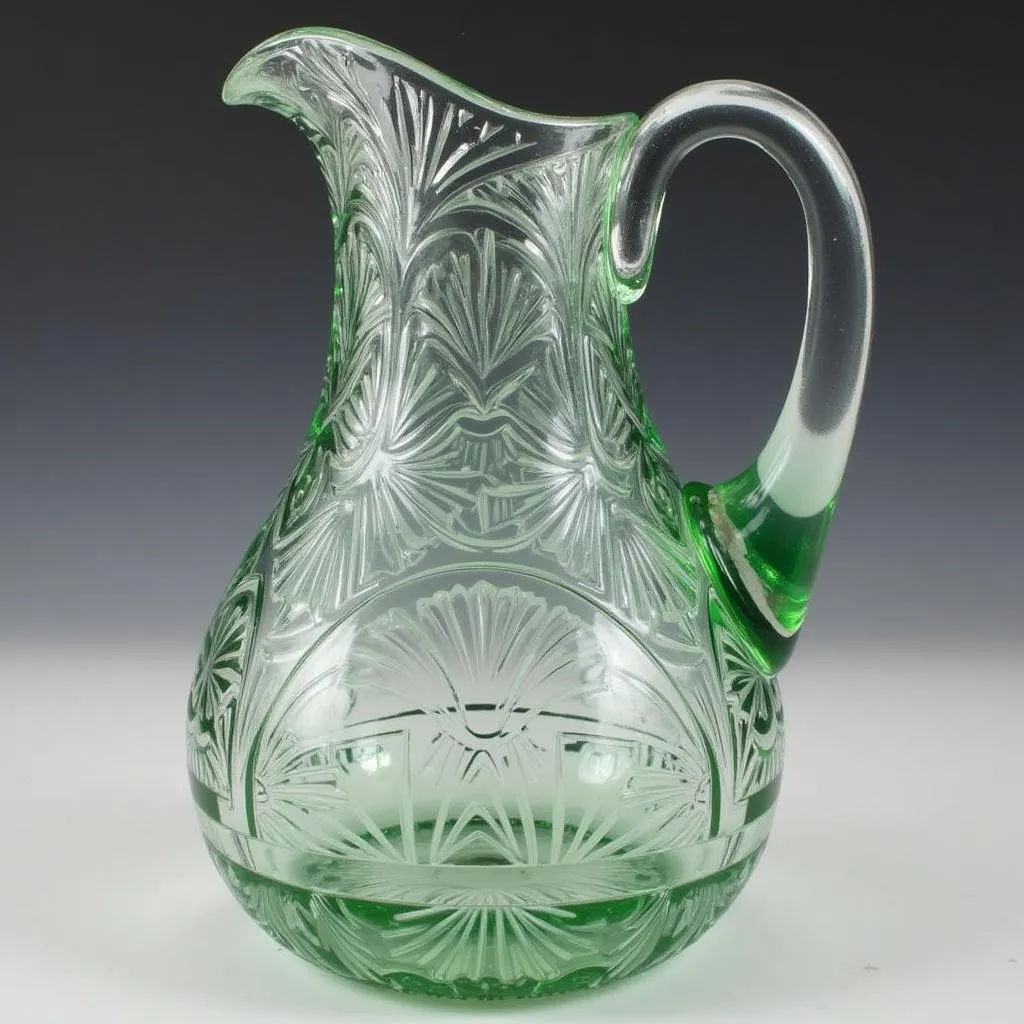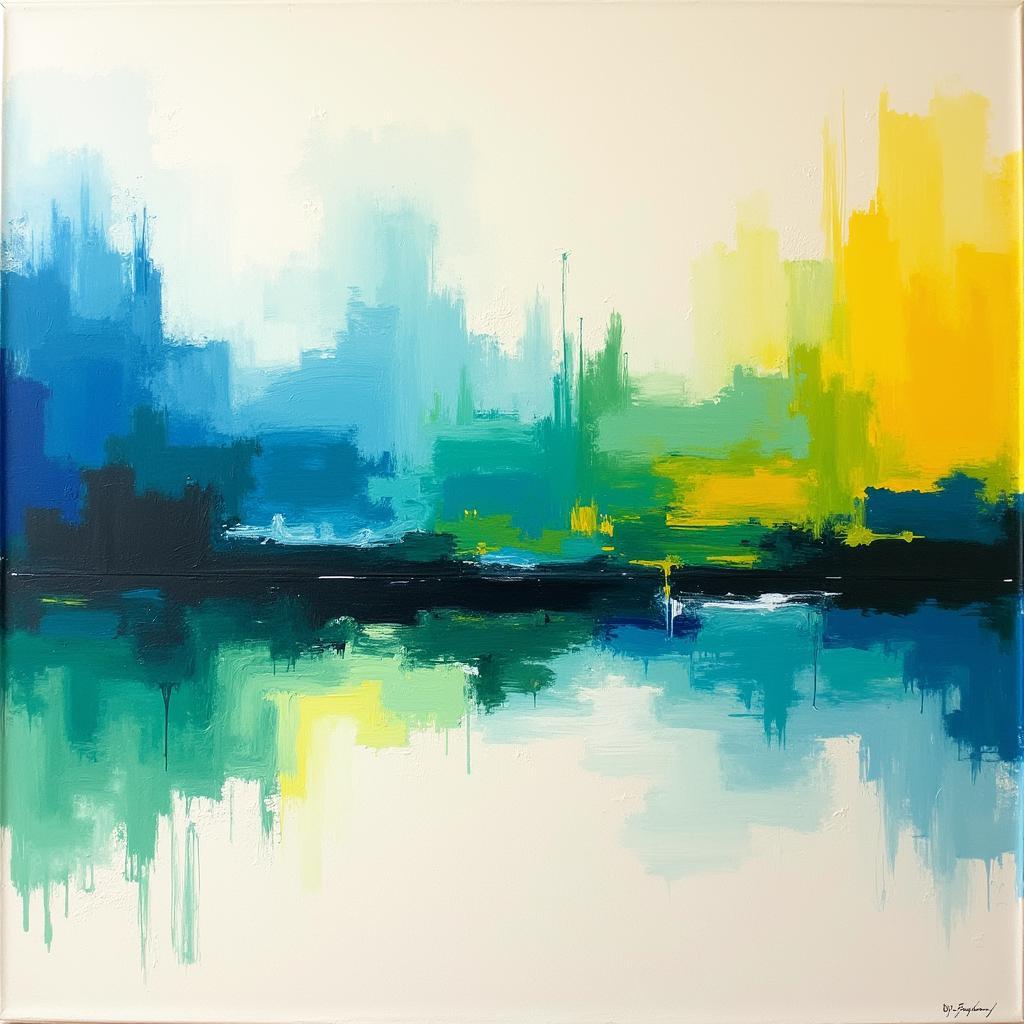Unveiling the Value of Mexican Feather Art
Mexican Feather Art Value is a complex and fascinating subject, encompassing historical significance, artistic skill, material rarity, and cultural context. These intricate creations, often imbued with spiritual meaning, hold a special place in Mexican art history and continue to captivate collectors and art enthusiasts worldwide. From ancient Aztec rituals to contemporary artistic expressions, feather art offers a unique window into Mexican culture and heritage. Let’s explore the factors that contribute to the worth of these extraordinary pieces.
The artistry involved in creating these masterpieces is truly remarkable. Imagine the meticulous work of meticulously selecting and preparing each feather, then painstakingly attaching them to a backing to form intricate designs. This labor-intensive process demands immense patience, skill, and artistic vision. The vibrant colors and intricate patterns often depict deities, animals, and scenes from nature, reflecting the rich symbolism embedded within Mexican culture. This deep connection to cultural narratives adds another layer of value to these works. You’ll find the artistry even more compelling when you consider the historical context, as featherwork was a highly valued art form in pre-Columbian Mesoamerica.
The Historical Significance of Mexican Feather Art
Featherwork held a prominent position in Aztec society, adorning royalty, priests, and warriors. These pieces weren’t just decorative; they were imbued with deep spiritual and symbolic meaning. Think of the shimmering plumage of a quetzal, representing Quetzalcoatl, the feathered serpent god. These artworks served as powerful symbols of status, spirituality, and connection to the divine. After the Spanish conquest, the tradition evolved, incorporating European influences while retaining its core essence. This blend of indigenous and European aesthetics created a unique hybrid style that further enriched the artistic landscape of Mexico. Understanding this rich history is crucial to appreciating the mexican feather art value. It tells a story of cultural resilience and artistic adaptation, further enhancing the worth of these objects.
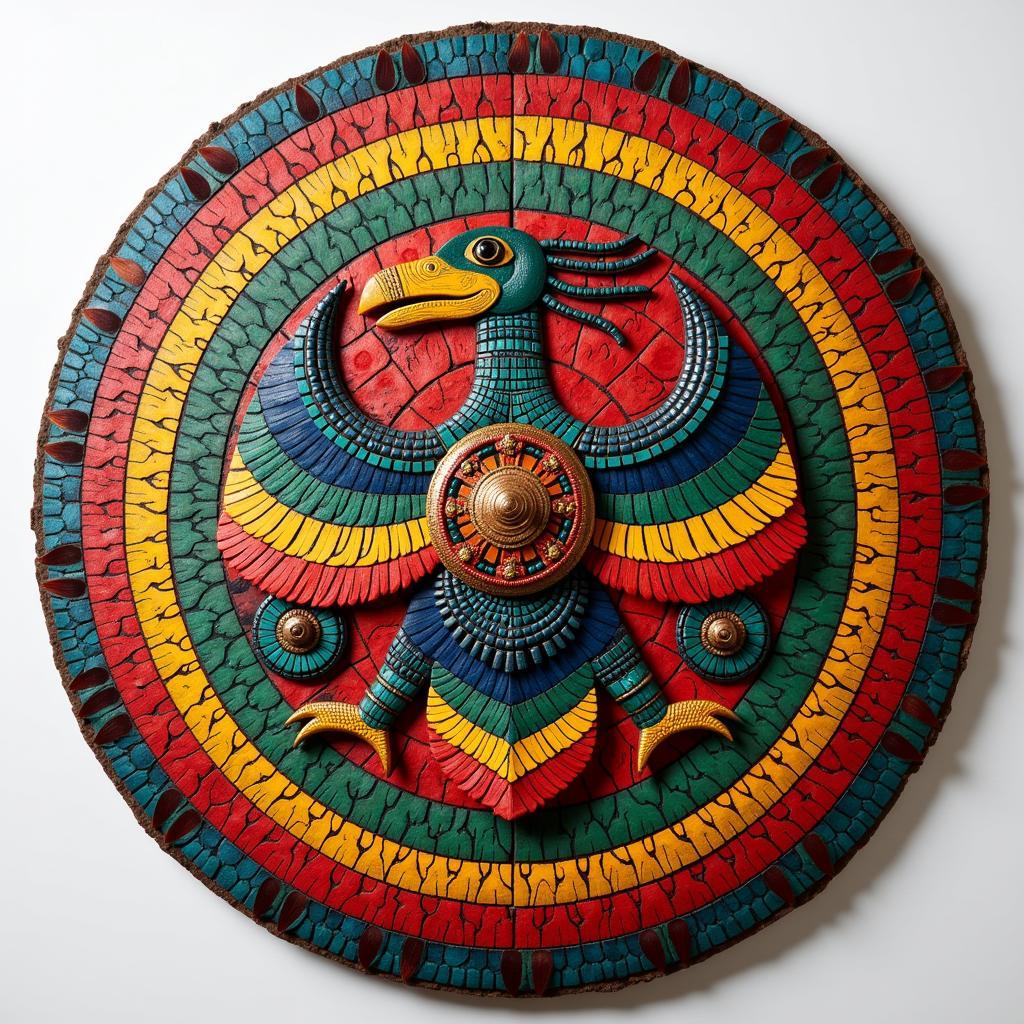 Ancient Aztec Shield Made of Feathers
Ancient Aztec Shield Made of Feathers
Decoding the Factors Influencing Mexican Feather Art Value
Several factors contribute to the value of Mexican feather art, making each piece a unique and potentially valuable artifact. Rarity, condition, artistry, and provenance all play a role in determining the price a collector might be willing to pay. A piece created by a renowned artist or one with a documented history, perhaps having belonged to a prominent collection, will naturally command a higher price. Likewise, the use of rare or exotic feathers, such as those from the now-extinct resplendent quetzal, significantly increases a piece’s value. The condition of the artwork is also paramount, with well-preserved pieces naturally being more sought after. If you’re interested in exploring other forms of Mexican art, take a look at Aztec mosaic art.
How is the Value of Mexican Feather Art Assessed?
Assessing the value of Mexican feather art often requires expert appraisal. Experienced appraisers consider factors like the age of the piece, the materials used, the complexity of the design, and the artist’s skill. They also examine the piece’s condition, looking for signs of damage or restoration. Provenance, or the documented history of ownership, also plays a vital role in establishing authenticity and value. For example, a piece with a known history linked to a prominent collector or institution will likely be worth more. Are you captivated by the beauty of Mexican bird art? Explore further with mexican feather bird art.
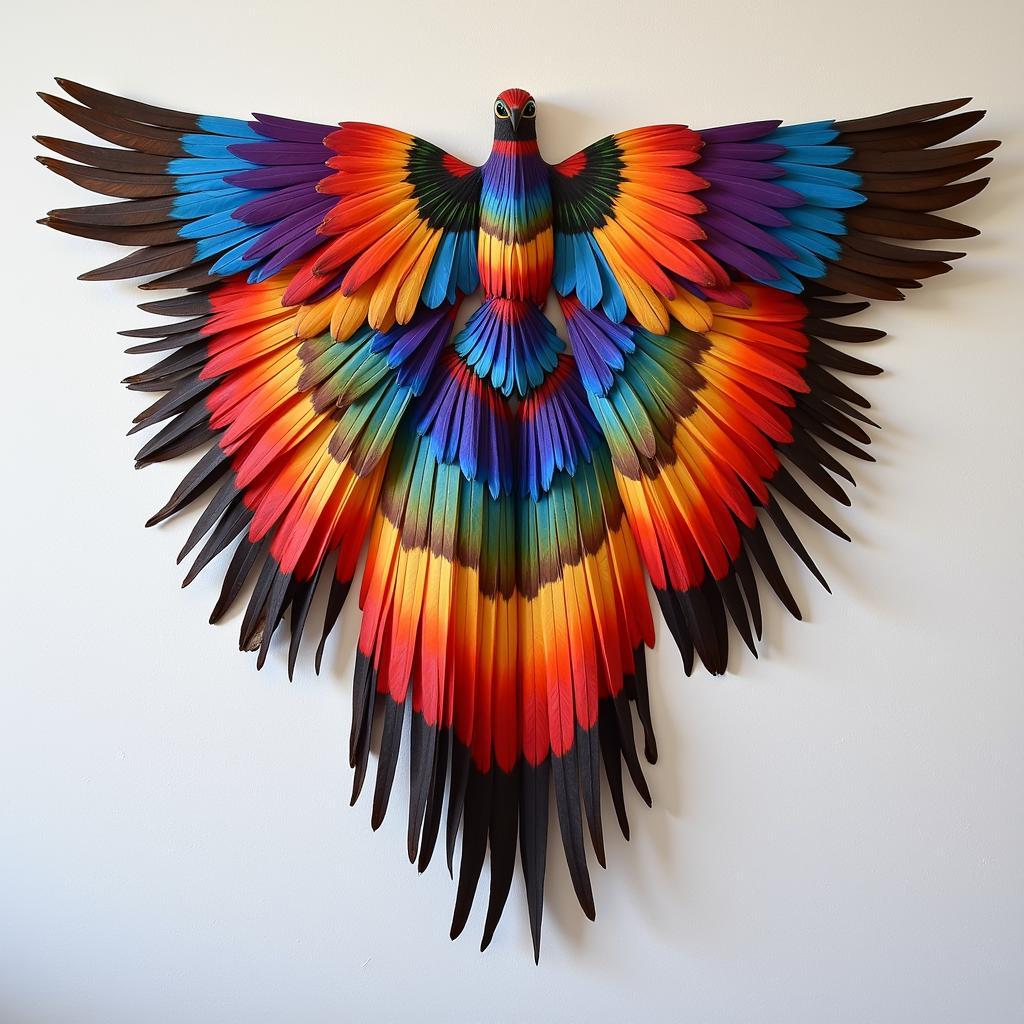 Modern Mexican Feather Wall Hanging
Modern Mexican Feather Wall Hanging
Preserving the Legacy: Caring for Mexican Feather Art
Mexican feather art, given its delicate nature, requires specialized care to maintain its beauty and value. Protecting these pieces from light, humidity, and pests is crucial for their long-term preservation. Direct sunlight can fade the vibrant colors of the feathers, while excessive humidity can lead to mold and mildew. Proper storage, ideally in a climate-controlled environment, is essential to protect these fragile treasures. Regular cleaning by a qualified conservator can also help to maintain their condition and prevent deterioration. Explore the exquisite artistry of Arte de Mexico chandeliers for a different perspective on Mexican craftsmanship.
What are the Common Mistakes to Avoid When Caring for Feather Art?
Avoid displaying feather art in direct sunlight or areas with high humidity. Don’t attempt to clean the piece yourself, as improper cleaning methods can damage the delicate feathers. Also, avoid storing feather art in areas prone to pests, as insects can cause irreparable damage. The Day of the Dead skeleton art offers another glimpse into Mexican artistic traditions.
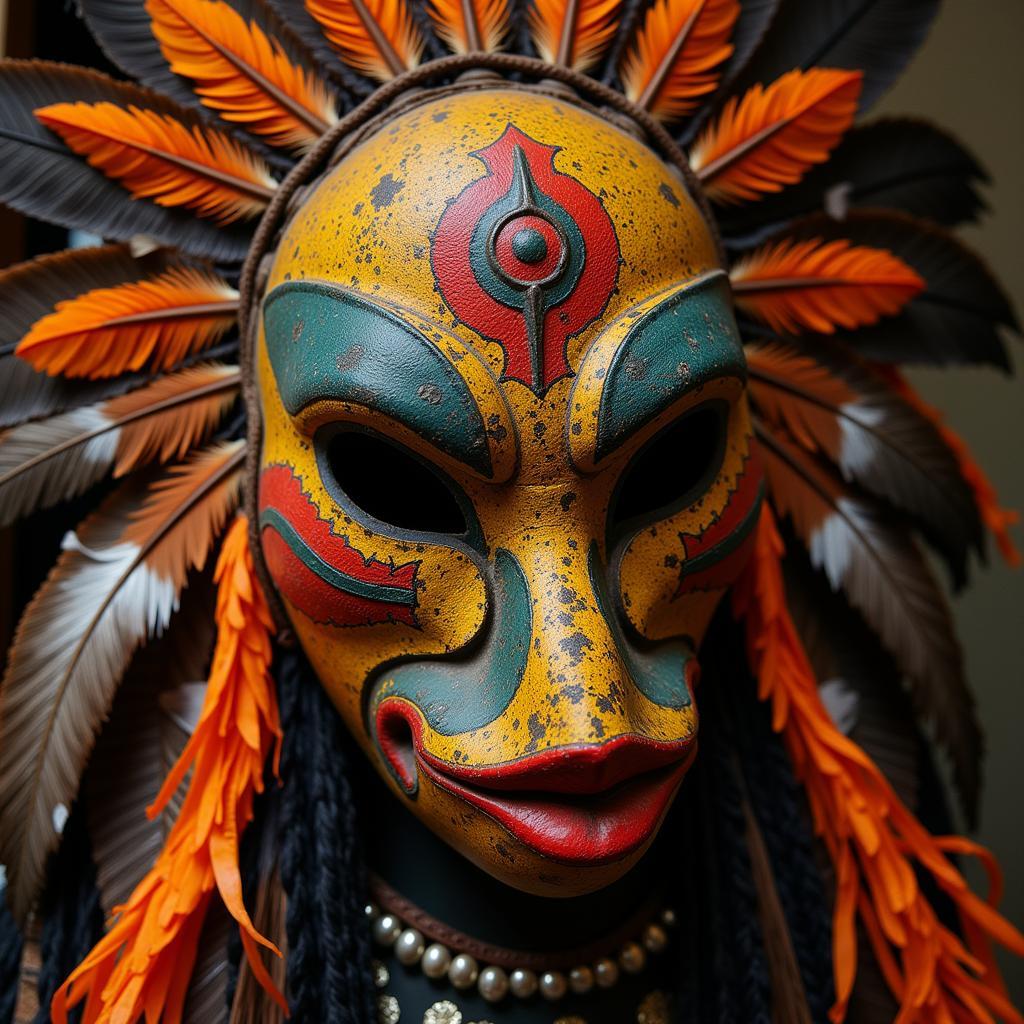 Vintage Mexican Feather Ceremonial Mask
Vintage Mexican Feather Ceremonial Mask
Conclusion: Appreciating the Enduring Value of Mexican Feather Art
Mexican feather art represents a unique blend of artistic skill, cultural heritage, and historical significance. From ancient Aztec rituals to contemporary artistic expressions, these intricate creations continue to fascinate and inspire. Understanding the factors that influence mexican feather art value allows us to appreciate the craftsmanship, symbolism, and cultural context that make these pieces so extraordinary. Whether you are a seasoned collector or simply admire the beauty of these works, exploring the world of Mexican feather art offers a captivating journey into a rich and vibrant artistic tradition.
FAQ
- What makes Mexican feather art so valuable? The intricate craftsmanship, historical significance, rarity of materials, and cultural context contribute to its value.
- How can I tell if a piece of Mexican feather art is authentic? Consulting with a qualified appraiser is the best way to determine authenticity.
- What is the best way to care for Mexican feather art? Store it in a climate-controlled environment, away from direct sunlight and pests.
- Where can I purchase authentic Mexican feather art? Reputable art galleries and auction houses specializing in Latin American art are good places to start.
- Are there contemporary artists still practicing Mexican feather art? Yes, many contemporary artists continue this tradition, often incorporating modern elements into their work.
- What are some of the common symbols used in Mexican feather art? Eagles, jaguars, serpents, and deities are frequently depicted.
- How has Mexican feather art evolved over time? While retaining its core essence, it has incorporated European influences and modern artistic expressions.
Further Exploration
For more information on related topics, explore these resources: Day of Dead skeleton art, mexican feather bird art, Aztec mosaic art, and Arte de Mexico chandeliers.
Contact Us
Need further assistance? Contact us 24/7 at: Phone: 02462573573, Email: [email protected] or visit us at: Savico Megamall, 7-9 Đ. Nguyễn Văn Linh, Gia Thụy, Long Biên, Hà Nội 10000, Việt Nam.
